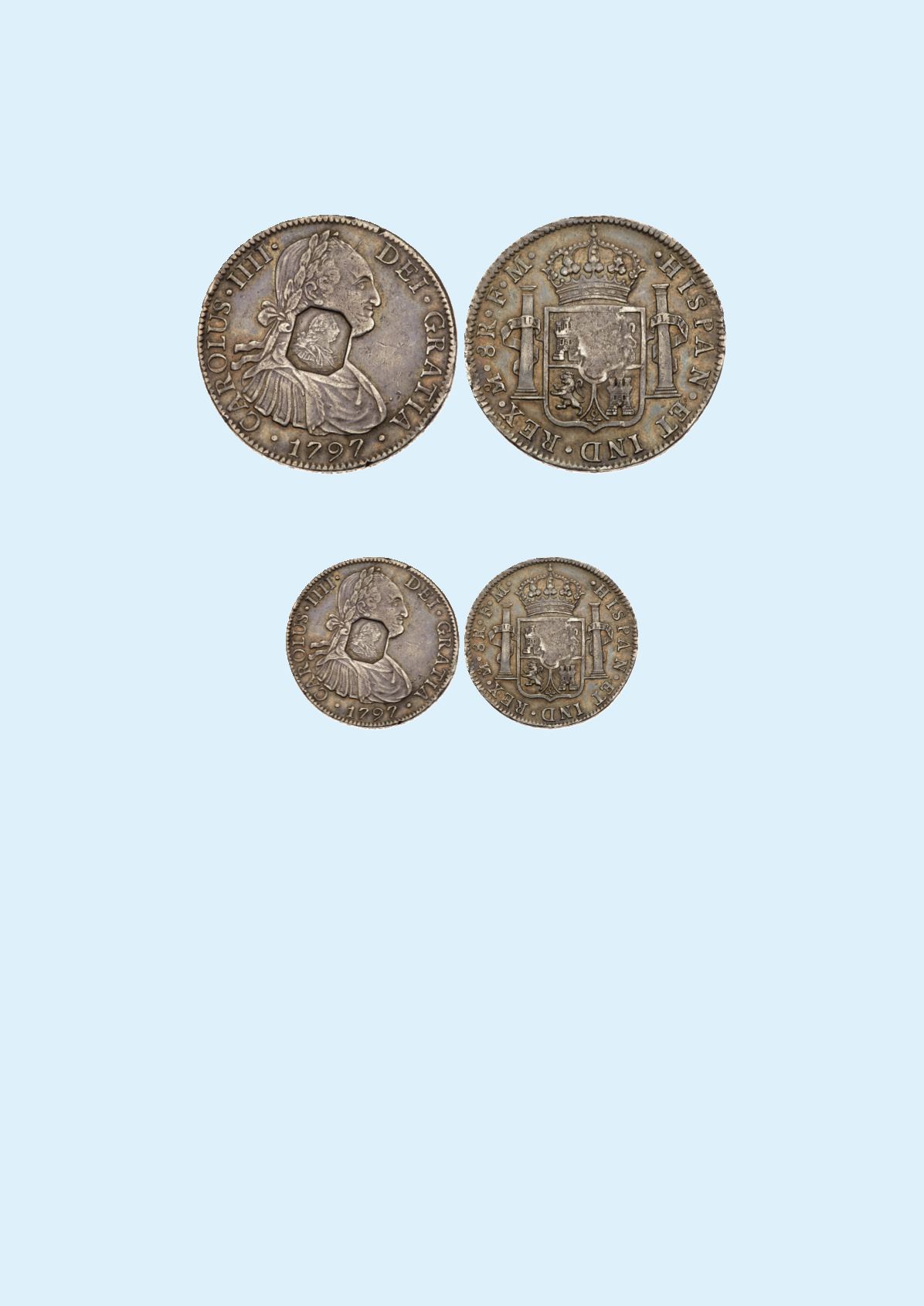

Rare British Octagonal Countermark on a Mexican Eight Reales
George III (1760-1820), octagonal countermark upon Spanish Eight Reales of King Charles IIII (1788-
1808), 1797 FM. Struck in Mexico City, Mexico, octagonal framed bust of George III right at center of
obverse, bust of Spanish King laureate and draped right, date below, legend and toothed border surround-
ing, CAROLVS.IIII. DEI. GRATIA, Rev. crowned quartered shield of arms, pillar with ribbon motto
either side PLUS ULTRA, legend surrounding.HISPAN. ET IND. REX. M. 8R.F.M. (ESC 138; Bull 1868;
S 3766; KM.type II). Toned with a few light nicks and marks both sides, in PCGS holder
graded EF 45.
$1,250
Ex Westfalia Auction 29, 14th February 2005, lot 2987.
PCGS certification 34313095. These emergency countermarked coins were struck in relation to a crisis with the silver coin-
age at the end of the 18th Century where the supply of silver in commerce and for the Mint had dwindled due to the Wars in
France after the Revolution in 1797. From March 1797 the Bank of England therefore released stocks of its Spanish dollars
each with an oval countermark valued at 4s and 9d for currency. They did not really alleviate the problem of smaller change
and were issued on an off with the oval countermark until the more complex larger octagonal mark replaced them from Jan-
uary to May 1804, as the oval pieces were being counterfeited. Eventually the octagonal replacements were also copied widely
and the ultimate solution was to have the Soho Mint totally overstrike the Spanish Dollars with the Bank of England design.



















